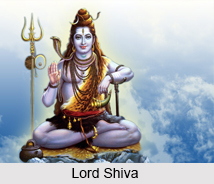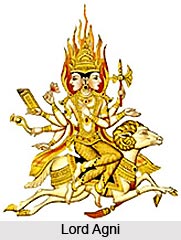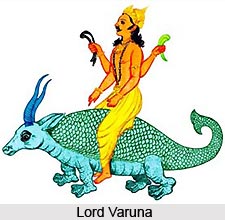 The content of Brahmanas can be easily understood by taking a look at a few of the works of Brahmana literature. The Brahmanas are a splendid proof of the fact that an enormous amount of religion can be connected with very little morality. Religious acts, sacrifices and ceremonies, are the one and only subject of all these extensive works, but morality is a thing with which these works have nothing to do. On the contrary, sacrificial acts are not only performed in order that the gods may fulfil the very materialistic wishes of the sacrificer, but also very frequently in order to injure an enemy. Indeed, the Brahmanas give directions for the priests, how, by means of the sacrifice, they can injure the sacrificer himself by whom they are employed, if, for instance, he does not give them enough presents. They need only perform the prescribed ceremonies in reverse order, or employ spells at the wrong place, and the fate of the sacrificer is sealed.
The content of Brahmanas can be easily understood by taking a look at a few of the works of Brahmana literature. The Brahmanas are a splendid proof of the fact that an enormous amount of religion can be connected with very little morality. Religious acts, sacrifices and ceremonies, are the one and only subject of all these extensive works, but morality is a thing with which these works have nothing to do. On the contrary, sacrificial acts are not only performed in order that the gods may fulfil the very materialistic wishes of the sacrificer, but also very frequently in order to injure an enemy. Indeed, the Brahmanas give directions for the priests, how, by means of the sacrifice, they can injure the sacrificer himself by whom they are employed, if, for instance, he does not give them enough presents. They need only perform the prescribed ceremonies in reverse order, or employ spells at the wrong place, and the fate of the sacrificer is sealed.
Gods in Brahmanas
In the Brahmana works, the religious and social conditions have changed very much since the time of the Rig Veda. The old gods of the Rig Veda still appear in the Yajur Veda Samhitas and in the Brahmanas, just as in the Atharva Veda. But their significance has wholly faded, and they owe all the power they possess to the sacrifice alone. Furthermore, some gods who still play a subordinate part in the Rig Veda step into far greater prominence in the liturgical Samhitas and in the Brahmanas, as Lord Vishnu, and especially Rudra or Lord Shiva. Paramount importance is now attached to Prajapati, "the lord of creatures," who is regarded as the father of the gods (Devas) as well as of the demons (Asuras). The word Asura, which, corresponding to the Avestic Ahura, in the Rig Veda, still has the meaning of "endowed with miraculous powers" or "God," and appears especially often as an epithet of the Lord Varuna, henceforth has exclusively the meaning of "demon" which it always has in later Sanskrit. Again and again mention is made in the Brahmanas of the battles between Devas and Asuras. Yet there is nothing monumental about these battles, as, for instance, the battle between Indra and Vrtra in the Rig Veda, but the gods and Asuras exert themselves to surpass each other by means of sacrifices. For in these Brahmanas the gods actually have to make sacrifices if they wish to accomplish anything.
 Sacrifice in Brahmanas
Sacrifice in Brahmanas
Nothing is more significant for the Brahmanas than the tremendous importance which is ascribed to the sacrifice. The sacrifice is here no longer the means to an end, but it is an aim in itself, indeed, the highest aim of existence. The sacrifice is also a power which overwhelms all, indeed, a creative force of Nature. Therefore the sacrifice is identical with Prajapati, the creator. "Prajapati is the sacrifice" is an oft-repeated sentence in the Brahmanas. "The soul of all beings, of all gods is this, the sacrifice." "Truly, he who consecrates himself for the sacrifice, he consecrates himself for the All, for only after the sacrifice follows the All; in making the preparations `for the sacrifice, for which he consecrates himself, he creates the All out of himself."
In countless places in the Brahmanas the sacrifice is identified with the Lord Vishnu and equally frequently with the creator Prajapati. But the year, too, is identified with Prajapati countless times, while on the other hand Lord Agni, as the fire-altar, is also regarded as the year, because the building of the fire-altar takes a whole year. Thus we read: "Agni is the year, and the year is these worlds," and immediately afterwards: "Agni is Prajapati, and Prajapati is the year." Or, "Prajapati, indeed, is the sacrifice and the year, the new moon night is its gate, and the moon is the bolt of the gate." A prominent part is here played by the symbolism of figures.
Equally significant is everything which is connected with the sacrifice, the sacrificial utensils no less than the prayers and formulae, the verses and their metres, the chants, and their melodies. Every single sacrificial act is treated with the greatest circumstantiality: enormous importance is attached to the most trivial circumstances, to the least details. Whether an action is to be performed to the left or to the right, whether a pot is to be put in this or in that spot on the place of sacrifice, whether a blade of grass is to be laid down with the point to the north or to the north-east, whether the priest steps in front of the fire or behind it, in which direction he must have his face turned, into how many parts the sacrificial cake is to be divided, whether the ghee is to be poured into the northern or the southern half or into the centre of the fire, at which instant the repetition of a certain spell, the singing of a certain song has to take place- all these are questions upon which generations of masters of the art of sacrifice have meditated, and which are treated in the most searching manner in the Brahmanas. Upon the correct knowledge of all these details does the rise and fall of the sacrificer depend.
 It is believed that those who know the guides through the wilderness of sacrificial art, are the priests, and it is no wonder that the claims of the priestly caste in the Brahmanas, as already in some parts of the Atharva Veda, exceed all bounds. Now the Brahmans were frequently declared to be gods.
It is believed that those who know the guides through the wilderness of sacrificial art, are the priests, and it is no wonder that the claims of the priestly caste in the Brahmanas, as already in some parts of the Atharva Veda, exceed all bounds. Now the Brahmans were frequently declared to be gods.
Morality in Brahmanas
Moral reflections are not found too often in the Brahmanas. Only occasionally certain such moral reflections can be seen such as for instance when the Asuras defeated the gods by falsehood, but the gods gained the ascendancy in the end. It is said that in like manner when men speak the truth, they may suffer adversity at first, but will prosper ultimately, while though the liars may have success for a time, they will surely perish in the end. Generally speaking, however, it is very characteristic of these texts that there is hardly any mention of morality in them at all.
These explanations found here and there in the Brahmanas are of importance in that they throw light upon the moral views and social conditions of the period to which the Brahmanas belong.
Thus discussed is a brief insight into the basic content of the Brahmanas.













